
Ender Magnolia: Bloom in the Mist Review
Do you ever play a game, kinda get stumped or stymied by the mechanics or story or whatever, and then get hit with a musical track so beautiful it makes you forget and forgive any prior misgivings you may have had with the game? There are a handful of examples of this for me — probably the one most relevant one would be NieR: Automata — but for me personally, it’s hard to remember the last time I just sat and soaked in the atmosphere of a game. Ender Magnolia: Bloom in the Mist, a Metroidvania, had me doing just that.
While I kinda hate the term “Metroidvania”, developer Binary Haze Interactive uses it in their marketing and on their Steam page, so…it’s an anime Metroidvania, but one unlike any I’ve played. I didn’t play the original game Ender Lilies, and if you’re curious, Magnolia takes place supposedly thousands of years after Lilies, so you won’t need to have played it either.
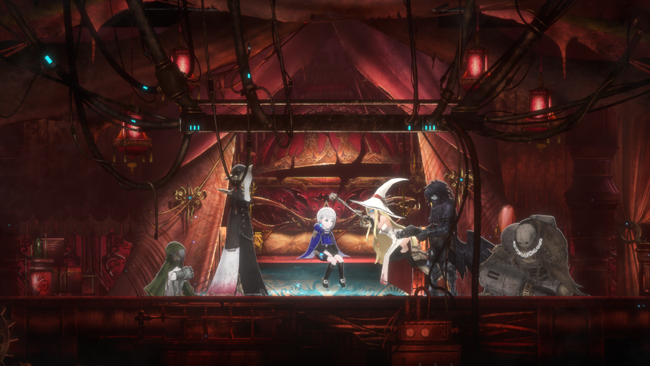
At the start, you’ll probably notice that the game’s movement isn’t that great. You have a jump and a dash, and that’s mostly it for probably the first fifteen or so minutes. You will unlock smoother, cooler movement tech as you play, but in my opinion, a few of those things could have been unlocked sooner. At around the halfway point though (around the Steel District) everything just clicks together and you’re zipping around maps, dipping and ducking your way through puzzles and around enemies.
The difficulty is pretty standard, if leaning a little towards too easy. The bosses are all fairly simple minus a few late-game and optional bosses (The Witch in particular had me stumped for about an hour), and the enemies are unique and varied enough to provide challenges for each of the stages you’ll traverse. Some basic enemies are even quite surprising in the amount of damage they can deal (and frustrating — you too will learn to fear the rats.)
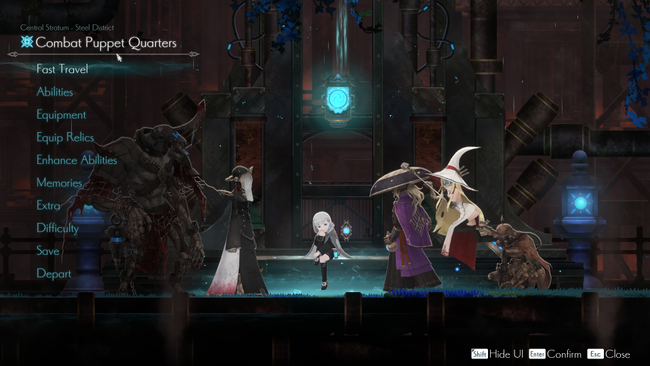
What sells the game to me, however, is not the difficulty nor the search-action tech, although I am excited to see how speedrunners will break the game. No, what sells the game to me is the velvety-smooth atmosphere each area exudes. Beautiful scenery, fluid animations, and a hauntingly tragic musical score strike the nerve of every single area. The starting area is probably the weakest, believe it or not, but every area after that just hits the right chord. The Old City and the Steel District in particular are my favorite areas to just sit and listen to.
The music is layered — the tracks are all generally quite soft, but at Respites (save points), the music loses what little vocals, bass and drums it had in favor of the background melody. Immediately upon exiting the Respite, the vocals, bass and drums kick in again to tell you that you’re charting dangerous territory.
The Igavania elements are front-and-center as well — in addition to constantly finding new Homunculi, which serve as your weapons and movement abilities, you also find a number of equippable items: Carapaces, which either provide stat bonuses or a counterattack option, Relics, which provide such a varied amount of benefits that it allows you to create entirely different builds, Bracelets, which provide stat bonuses, and Totems, which provide passive benefits to your healing charges. You are also gaining levels constantly, though how much your level actually impacts your power I couldn’t say. It felt extremely organic and balanced the entire playthrough, to the point where I very rarely felt that I was in over my head while exploring.
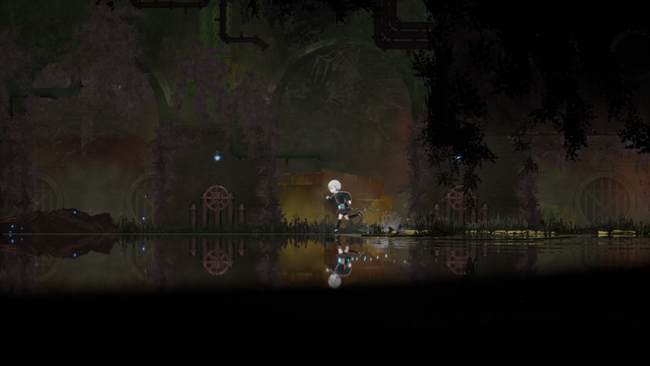
You’ll notice that I haven’t really touched on the story much, and that’s for a few reasons: obviously, spoilers are bad, but also the way the story is drip-fed to you via item descriptions, collectables and a handful of cutscenes is fairly slow. The game makes up for it, however, by handling smaller story interactions extremely well. At each new Respite, you can talk to your Homunculi and learn more about them — how they interact with each other, their thoughts on your current objective, or ruminations on their past lives. It all builds upon each other so that when you do hit the major narrative beats, it all starts to make sense.
The game is pretty heavy-handed with how it views class hierarchy — it’s impossible to miss that the Old City in the Lower Stratum is essentially a graveyard full of undesirables, condemned to death by the ruling elite in the Upper Stratum. A plague known as the Blight tears through the mines and caverns, causing madness to those who inhale the Fumes. It’s not like the middle class is faring that much better either, as their central programs are being shut down and sacrificed for the whims of a few rich, powerful men for use in experiments and gladiator spectacle.
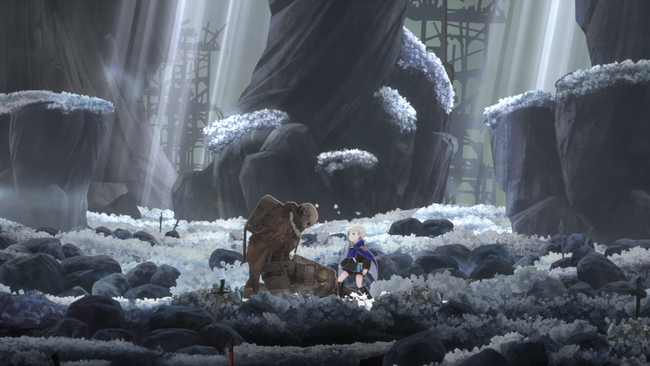
While I have nothing but praise for the majority of the game, it isn’t without a few annoyances. Some enemies could have used a balancing pass — I mentioned the rats before and I’ll mention them again, those things hit way too hard and too fast in my opinion — but also some areas feel very… sluggish to navigate in the early game when you lack your movement tools. Namely, the Crimson Forest, which uses one-way portals to obfuscate the path forward. The area is large, there’s a lot of verticality, a few punishing drops that make you retread a lengthy path just to progress, but most annoyingly of all, the portal indicators on the map do not tell you which portal they connect to. You do eventually intuit that they project you horizontally a certain distance, but the lack of map marker indications makes navigation a chore.
This area alone actually walled me from wanting to play the game for a few days, which leads me back to my original point — once I got through the Crimson Forest and kept at it, the rest of the game was an absolute blast. Reaching the Steel District, I honestly forgot about how tiresome the Crimson Forest was, and on revisiting it to grab some missed collectables, found it really easy to traverse (since I had all of my movement tools).
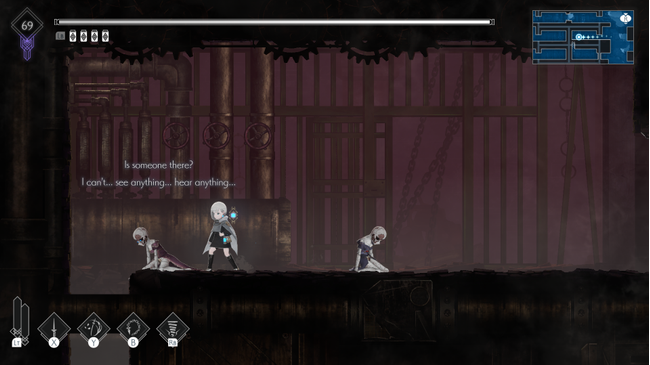
All of that to say that I fell in love with this game. A one-two gut punch of emotional soundscapes and beautiful imagery, followed by solid search-action gameplay and interesting progression make Ender Magnolia an easy recommendation to anyone remotely interested in the art of video games. My playtime was sitting at approximately 17 hours for a completionist, all-achievements playthrough, so you can enjoy this over the course of a weekend, easily.
Ender Magnolia: Bloom in the Mist is available on Steam, alongside a free demo. It will be available on Switch, PlayStation and Xbox in the future.